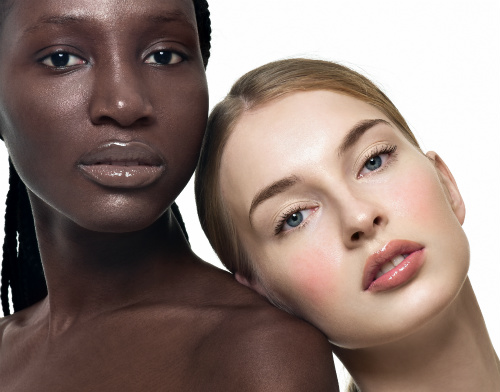BEAUTY UNDER 30 YEARS

It is no secret standards of beauty are changing. Pale skin was once the best way to let others know you were too elite to work the fields in the bronzing sun, and even Marilyn Monroe, arguably America’s greatest sex symbol, would be considered plump by today’s standards. While none of this is surprising, what may be surprising is just how much preferences have changed in only 27 years.
THE MOST BEAUTIFUL PEOPLE STUDY
In a recent study, Neelam A. Vashi, M.D. of the Boston University School of Medicine, along with other researchers, hypothesized that recent changes in ideas of beauty may trend more toward sameness. To determine how these ideas have changed in recent history, the researchers compared details of those on People magazine’s World’s Most Beautiful list in 1990 with those in the 2017 list. These characteristics included age, sex, ethnicity, Fitzpatrick skin type, hair and eye color, and the presence of a visible skin condition.
MORE WOMEN MADE THE LIST
The researchers discovered that beauty standards have, in fact, changed in the past 27 years, just not in the way they expected. When comparing the 50 celebrities on the 1990 list with 135 celebrities on the 2017 list, the researchers discovered the percentage of women on the list rose from 52.0% in 1990 to 88.1% in 2017. Of the listed celebrities, only 5 of the total 185 had a visible skin condition or lesion that affected their skin’s texture and color, so it seems clear and even skin is still considered the ideal over the past three decades.
ETHNIC DIVERSITY IS INCREASING
What was more surprising was the change in skin type and ethnicity through time. In 1990, only 12.0% of skin types on the list were Fitzpatrick IV to VI, while in 2017 this rose to 29.6%. This represents a trend toward including more brown skin tones on the Most Beautiful list. The shift is also represented in the ethnicity statistics: while only 24.0% of the listed celebrities in 1990 were of a non-white ethnicity, that percentage increased to 40.0% in 2017. Those of mixed race also gained more representation in the most beautiful list, rising from a single celebrity in 1990, which was 2.0% of the total list, to 14 people in 2017, representing 10.4% of the list. This means beauty standards in the United States are no longer focusing on white celebrities, but including a much more diverse collection of skin colors and ethnicities.
AVERAGE AGE IS TRENDING HIGHER
Although beauty standards tend to favor younger skin, free of wrinkles and other marks of aging, the Most Beautiful list seems to be shifting toward including a wider variety of ages. The average age on the list in 1990 was 33.2, but by 2017 this had risen to 38.9, thanks to some more mature celebrities like Viola Davis at 51, Oprah Winfrey at 63, and the seemingly-ageless Christie Brinkley at 63 years of age. Topping the list in 2017 was Julia Roberts at 49, quite a few years after her debut on the magazine’s Most Beautiful list in 1991. Although the average age is trending higher, it is unclear whether this inclusion of more mature celebrities is a celebration of life’s battle-scars or a credit to the skills of plastic surgeons.
WHAT IT ALL MEANS
The study authors consider People magazine to be a good indication of what mass media considers beautiful, and society tends to pick up on cues from the media. However, as different cultures gain prominence in North America, with their different standards of beauty, the list seems to becoming more diverse. As people are exposed to more diversity, the list of beautiful people is broadening to include darker skin and varying backgrounds. That said, despite the diversity of skin colors and ages, it seems standards of beauty still favor unblemished skin, vitiligo-affected model Winnie Harlow excepted. Those with a skin condition or visible lesion still have but a tiny presence on the coveted beauty listing.
It is interesting to discover just how much standards of beauty have changed in less than three decades. 2001 saw Botox’s approval for glabellar lines, and since then dermal filler and other minimally-invasive treatments have steadily gained favor around the world. Plastic surgery has become less taboo and more out in the open as celebrities and non-celebrities alike seek smooth, unblemished skin. The theme in 2017 seems to be the celebration of diversity, with a few little tweaks for flawless skin.
Team Rejuvee